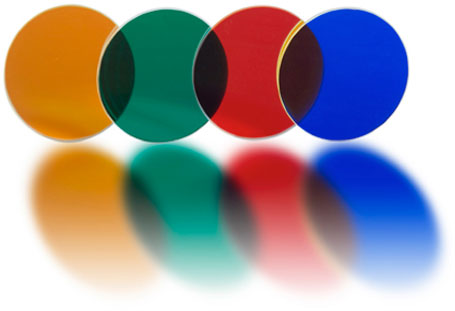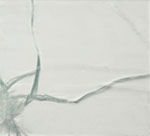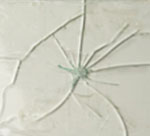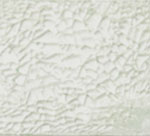Guide to Glass
Selecting Glass to Meet Requirements
Different types of glass possess different qualities depending upon their chemical makeup and how the glass was produced. Choosing the right glass for your application requires understanding the different physical properties each has.
Thermal Properties
Glass is measured by a variety of factors which greatly affect your choice of glass. The Coefficient of Thermal Expansion (CTE) is the expansion measurement of glass as temperature is raised. This is an important factor to consider when placing glass in a frame or mount since glass expands much less than most metals and plastics, and may cause breakage upon cooling, or affect the integrity of environmental seals.
Thermal conductivity is the ability to conduct heat through the glass or away from the heat/light source. This is important when considering glass as a view port exposed to high temperatures or for high infrared applications. Each type of glass has a maximum operating temperature and thermal shock rating. These will guide the choice of glass depending on the amount of heat glass will withstand, and how it cools after the glass is subjected to rapid change in temperature. Glass may be strengthened to change these thermal properties by heat strengthening, heat tempering, or chemically strengthening.
Optical Properties
There are several important measurements when determining the amount of light passing through glass. The refractive index determines how much a light wave is “bent” when entering or leaving the surface of the glass. This is important in producing certain optical devices or effects, such as lenses. The dispersion measures the separation of light into its component colors, such as a prism dispersing white light into a color band or a rainbow effect. Transmission measures the amount of light passing through the glass material. Specular reflection is a measure of the directional return of light from the surface. The absorption property is the amount of light energy converted to heat within the glass that is not transmitted nor reflected. Tinted materials will absorb more light than clear materials.

Chemical Properties
All soda-lime type glass and some borosilicate glass contain sodium or alkali metal ions. Prolonged exposure to liquids or vapor, such as water, will cause the sodium/alkali ions to migrate to the surface of the glass called sodium or alkali leaching. This can cause cloudiness or haze on the surface of the glass. Porous coatings may also incur this phenomenon, causing a disruption of the bond between the coating and the glass surface. In high humidity or critical surface applications, this must be considered when specifying the material. Placing a “barrier” coating, such as silicon dioxide, on the glass will limit the amount of reaction, or one can select special glass with little to no alkali content and high chemical resistance. The acid resistance and alkali resistance measure the time it takes to remove a layer of specified thickness for each test.
Electrical Properties
When choosing a glass for electrical or electronic applications, there are several characteristics to consider. The volume resistivity is the resistance in ohms between opposite faces of a centimeter cube of the glass tested. This is important when glass is used as an electrical insulator. The dielectric constant of a glass is the ratio of energy stored in a condenser with the glass as the dielectric, compared with the energy stored in the same condenser with air as the dielectric. This measures the ability of a glass to store electrical energy, and varies with the frequency of the voltage applied to the condenser. This is important when the glass is used as a substrate for electrical or electronic devices. Surface resistivity is the ratio of the potential gradient parallel to the current along its surface, to the current per unit width of the surface. This method is used to measure the conductivity of coated glass.
Mechanical Properties
The mechanical properties of glass determine the amount of stress the glass can withstand. Stress is defined as the perpendicular force per unit area applied to an object, in a way that compresses (compressive stress) or stretches (tensile stress) the object. Non-strengthened glass materials have relatively low tensile strength yet high compressive strength. Therefore, most glass breakage is due to tensile stress failure. Mechanical properties are measured in a variety of ways; Modulus of Rupture (MOR) test measures the bending or flexural strength; Shear Modulus (modulus of rigidity) measures the stiffness or amount of shearing or twisting forces glass can withstand; Knoop Hardness Number (KHN) measures the hardness of glass; Density is the mass value per unit of volume specific gravity is the ratio of the density of the glass to the density of water.
Understanding Light & Color
 Understanding how to control light and color requires understanding the light spectrum. Light is how we describe a form of electromagnetic energy that interacts with chemicals in the retina and generates an electrical impulse, giving rise to complex neural signals ending with the perception that we term sight. The amount of electromagnetic energy that is detected and viewable through the material is defined as the transmission of the glass.
Understanding how to control light and color requires understanding the light spectrum. Light is how we describe a form of electromagnetic energy that interacts with chemicals in the retina and generates an electrical impulse, giving rise to complex neural signals ending with the perception that we term sight. The amount of electromagnetic energy that is detected and viewable through the material is defined as the transmission of the glass.
Light is a portion of the electromagnetic spectrum. For glass purposes, we usually define light as that portion of the spectrum from the ultraviolet (UV) range through the visible range and then through the infrared (IR) range. Our eyes permit the discrimination of many individual wavelengths or combinations of wavelengths we call colors.
When light encounters elements in the glass that are small relative to the light wavelengths, then the shorter wave-lengths are scattered much more than the longer. This is the reason a cloudless sky is blue and the overhead sun is yellow: the blue light from the sun is scattered by air molecules in the atmosphere much more than the light at the red/yellow end of the spectrum. At sunset the sun’s rays must traverse a longer path through the atmosphere to an observer than earlier in the day so that’ only the relatively non-scattered red rays will reach an observer and explains the red colors of sunset. This is known as Rayleigh scattering. Further, without an atmosphere the “sky” would be black in daytime.
When the major part of the light is transmitted through the glass without scattering or absorption, the substance is said to be transparent. When most of the light entering glass is absorbed within it, the glass is said to be opaque. In some glasses, an electron in the glass may absorb a photon of one particular wavelength, and release and transmit another longer wavelength and lower energy photon; this is called fluorescence. Note that selective absorption of particular wavelengths gives rise to the transparency and colors seen in many precious gems or colored glass.
Controlling Light & Color with Coatings & Filters
 Controlling light and color with coatings and filters interacts with the characteristics of reflection, refraction, and interference of the light wave passing through glass. In this section of optical properties of glass, we learned reflection is when light bounces back from the surface of the glass; refraction is when light bends when passing through the glass. Another result from light passing through glass is called diffraction, which is the deviation of light when the wavelength encounters an edge or aperture.
Controlling light and color with coatings and filters interacts with the characteristics of reflection, refraction, and interference of the light wave passing through glass. In this section of optical properties of glass, we learned reflection is when light bounces back from the surface of the glass; refraction is when light bends when passing through the glass. Another result from light passing through glass is called diffraction, which is the deviation of light when the wavelength encounters an edge or aperture.
The principle of interference is employed to reduce reflections, particularly in optical instruments and displays. This is especially important when much of the incident light would otherwise be lost to reflection or doubly reflected reducing image contrast, reducing the overall light transmission or causing unwanted distracting images.
The coatings listed below are among the variety of ways to control how and the quantity of light passing through glass. Multi-layer coatings are utilized in high quality optical components to minimize reflections across the spectrum. Polarizing materials can also be applied to reduce image-degrading glare, such as on sunglasses or applications like ATM or computer screens. Glare-reducing filters cause light traveling through the filter to be cancelled when reflected off the surface of the screen on its return to the eye.
Glare Reduction
Glare Reduction in glass is possible by two basic methods:
- Etching the surface to break up the reflection patterns, known as non-glare glass
- Coating the glass with optically designed materials known as anti-reflective (AR) glass
Glare reduction may be specified on either single or double surfaces, and may incorporate one or both methods listed prior. Untreated or uncoated glass surfaces will reflect approximately 4% or more, depending upon the angle of incidence and index of refraction of the light hitting each surface (front & back). Applying glare reduction methods to untreated glass can significantly reduce this percentage of reflected light. Determining the type of non-glare glass to specify is based upon several factors: Level of gloss desired, finished resolution of glass, haze and light transmission desired, Anti-Newton effects desired, single or double sided etching, choice of coatings, and cost trade-offs.
Non-Glare Glass
Non-Glare glass is available in several quality and etching levels: from picture frame quality to display quality, and from 10 to 140 gloss units. Non-glare glass is produced by chemically etching the surface(s) of the glass to produce a “bumpy” surface pattern that scatters reflected light. Various processing techniques and parameters result in different levels of scattering. Non-glare glass lends itself perfectly to chemical strengthening, which increases the impact strength of the product. The lower the gloss units, the less glare.
Anti-Reflective (AR) Glass
Anti-Reflective (AR) Glass is created by bonding specially selected materials of specific thicknesses to the surface(s) of the glass. While uncoated glass has a surface reflectivity of approximately 4% per surface, (AR) glass will have a reflection value less than uncoated, ranging down to 0.1% in some cases. (AR) glass has several purposes. It may be used to reduce glare, improve the brightness (signal strength) of transmitted im-ages or light beams, or to improve the contrast of an image (signal-to-noise ratio of a beam).
(AR) coatings may be placed on flat, concave, convex, or complex shaped transparent substrates. Substrates may include but are not limited to commercial soda-lime glass, borosilicate glass, aluminosilicates, special index optical glasses and filters, quartz, and fused silica. (AR) glass is produced by several methods:
- Pyrolytic Coating is a coating placed on glass as the substrate glass is formed at the primary manufacturer of the glass. “Pyro” means heat and the coating is created at the high temperatures found in the manufacturing of the glass substrate. It is a commercial grade glass generally intended for store windows or other architectural applications.
- Dip Coating on glass is accomplished by dipping the glass into tanks containing proprietary materials and bonding agents and then “firing” the coating onto the surface to create a bond. Dip coating may be performed on small parts and lot sizes as well as large sheets and lot sizes. Most dip-coated products do not have anti-reflective performance below 1% surface reflectivity and 1-3% is average. In addition, dip coating may not be as durable as either pyrolytic or thin film coated products.
- Thin Film Coatings are commercially available in several forms and produced by two basic methods, evaporative coatings and sputter coatings. Both methods may produce precisely controlled layering and high performance coatings with many material choices available. The major difference between sputtering and evaporation coatings is with the sputtering methods, the AC or DC electrical/magnetic charges, depending on the equipment design, increase the energy of the vapor. This produces a more uniform and denser layering of the coating deposition. The majority of high efficiency broadband anti-reflective (AR) product are sputtered.
Basic Concept of Glass Strengthening
In order to improve the tensile strength characteristics it is possible to “pre-load” the surfaces of the glass with compressive stresses. This can be done either by heat strengthening, heat tempering, or chemically strengthening the glass. When a glass plate is bent, the convex surface is placed into tension while the concave surface is compressed. By adding compressive stress to the glass, the compressive force must be overcome before the surface becomes tensile in nature. Strengthening the glass can dramatically improve the amount of bending force that may be placed on a plate of glass before it breaks.
Compressive strength includes two elements of compression: surface compression and edge compression.
- Surface and edge compression are the amount of compressive (squeezing type) stress on the surfaces or edges of glass introduced by processing, heat strengthening, heat tempering, chemically strengthening, or in primary glass formation. The opposite of compressive stress is tensile (elongation type) stress. Glass is very low in tensile strength and extremely high in the amount of compressive stress it can withstand. Therefore, most glass breakage is due to tensile strength failure.
- Edge compression is equivalent to surface compression except it is defined as measured on the edge surfaces. That is, a rectangular plate of glass actually has 6 surfaces; top edge, bottom edge, left edge, right edge, front surface, and back surface. Strengthening processes work on all 6 edges during processing. However, not all surfaces are necessarily strengthened equally.
Measuring the Strength of Glass
In assessing the strengthening levels of glass, the primary methods of measurements are; Impact testing and Modulus of Rupture, both of which are destructive methods. Depth of Layer (DoL) can also be measured and theoretical compression strength (CS) using non-destructive testing of chemically strengthened glass.
- Impact Testing is primarily conducted in accordance with ASTM-C-1048 for heat tempered glass. Specific impact testing or drop ball testing can be designed to meet specific custom requirements for heat strengthened, heat tempered, and chemically strengthened glass.
- The Modulus of Rupture (MOR) strength of glass is determined by specific tests conducted in accordance with ASTM-C -58. This test measures the bending (flexural) strength of glass.
- Depth of Layer (DOL) is a measurement of the compressive strength of glass specific to chemically strengthened glass. It is the depth into the surface of glass to which compressive stress is introduced. It is defined as the distance from the physical surface to the zero stress point internal to the glass.
There are three basic types of glass strengthening:
- Heat Strengthening is appropriate for many applications and materials where a full temper is not possible or desired due to thickness, size, low thermal expansion rate of the base material, or other application requirements. This process does not produce a full “dicing” pattern when the glass is broken and will not meet the requirements of ANSI Z97.1 or CPSC 16CFR1201. Where appropriate, ASTM-C-1048 “Kind HS” may apply.
- Heat Tempering is appropriate where compliance is required to ANSI Z97.1 or to ASTM-C-1048 (Clarifying Cosmetics). This standard is appropriate when small size fragments (dicing) are required when the glass is broken. Heat tempering will cause some optical distortion. Where no optical change is acceptable, chemical strengthening may be suitable instead. Heat tempering is typically appropriate for glass from 1/8” (3.2mm) – 3/4” (19.05mm) thick and with sizes from 1” diameter to 48” x 72”. Larger sizes can be reviewed on a case-by-case basis. Heat tempered glass may be verified by performing a surface compression test or break pattern test for compliance.
- Chemically Strengthening is appropriate for thin glass, very thick glass, complex-shaped glass parts, or where minimal optical or mechanical distortion is desired. It typically provides 5 to 8 times the strength of annealed glass. Glass strengthened by this process will not “dice” and therefore cannot be used in those applications requiring small fragments. Chemical strengthened glass may be specified according to ASTM-C-1422. Abrisa Technologies’ maximum size for chemically strengthened glass is 46” x 29”. Can also chemically strengthen (diagonal) 42” x 29” (approx. 51” diagonal).

Non-Strengthened Glass Break Pattern

Chemically Strengthened Glass Break Pattern

Heat Tempered Glass Break Pattern